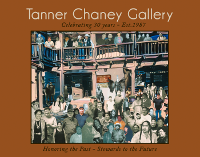Hopi
HISTORY
Perceive a world at the beginning of time, soft as moistened clay. A dawn of creation. From out of that golden mist emerged the Southwest's first civilization, the Anasazi, the direct ancestors of the Hopi. A Navajo word meaning “enemy ancestors,” Anasazi is not what the Hopi call their ancestors, however, choosing instead “Hisatsinom,” meaning “Long Ago People.”
The Hisatsinom flouished a millenium ago, with an empire that encompassed two hundred and fifty-thousand square miles, and trade routes that reached to the southern tip of the western hemisphere. In the mid-1300s, the Anasazi fled their cities, abandoned their great Pueblos, and scattered—clans and families scrambling into caves. Sometime later, clans built settlements high on mesas in northern Arizona, where the Hopi still live.
And, suddenly, they weren't called Anasazi anymore, but Hopi.
In the northeast corner of Arizona, where canyons hide and eagles nest, Black Mesa rises. And upon its golden shoulders are the main villages of Hopi, held aloft, close as possible to the turquoise sky.
The Hopi have lived in the same place for a millenium*, their villages so old as to look fragile. But of course looks are deceptive. What looks fragile is steadfast; what may appear as primitive and lacking in modern conveniences, is instead the ground beneath the feet of people with a different focus. (* At Acoma, they say Sky City Pueblo is the oldest continually inhabited city in the United States. The Hopi say the same about the village Old Oraibi on Third Mesa.)
Also called Moqui, they are the only branch of the Shoshonean linguistic stock living in pueblos. Hopi houses, built by the women, are of stone roughly cut and laid and finished in plaster. The ceilings are supported by beams and cross poles and consist of a compressed mixture of brush and clay. The floors are sometimes flagged, and the interior walls are generally whitewashed with gypsum and sometimes ornamented in simple geometrical bands. In early Hopi houses the doorways, which were the only sources of light, were sometimes built in T-shapes, exactly as those of their ancestors in the great Pueblo Bonito in Chaco Canyon.
Culture and Religion
In traditions, social organization and customs the Hopi are almost identical with the other Puebloan tribes. The tribe is grouped into matrilineal clans. Their religion, like that of other Pueblo peoples, includes the worship of forces of nature and has many ceremonies intended to invoke or influence supernatural powers. Ancestor worship plays an important role in Hopi ceremonies. Private rites are held in underground ceremonial chambers called kivas. The celebrated Snake Dance, actually a rain dance, is considered one of the most spectacular ceremonies.
The six directional color and animal symbolism for the Hopi:
- Northwest – Yellow, Mountain Lion
- Southwest – Blue, Bear
- Southeast – Red, Wildcat
- Northwest – Yellow, Wolf
Jewelry
The first Hopi silversmith learned from a Zuni around 1890. A regular trade route already existed between the two pueblos, and the Zuni smith Lanyade began to trade some of his silver jewelry among the Hopi, apparently in return for handwoven native cotton textiles. Lanyade eventually taught silverwork to a Hopi named Sikyatala. Early handwrought silver beads, rings and bracelets made by the Hopi are virtually indistinquishable from those made by Zuni and Navajo smiths. It was not until the 1930s that the distinctive Hopi style emerged, and it came about from some non-native encouragement.
In 1939, Dr. Harold Colton and his wife Mary Russell Colton of the Museum of Northern Arizona initiated a project encouraging Hopi silversmiths to create a unique type of jewelry that would become their hallmark. The result, silver overlay, is today the most widely recognized type of Hopi silverwork. Using designs drawn from traditional pottery, textiles and baskets, Hopi smiths cut the design from one sheet of silver and then solder to another sheet as backing. The depressions form designs which are blackened or oxidized and usually textured with chisel marks or stamp work. The outer layer is then polished leaving the design dark. Animals play a large part in the Hopi religion and animal-like designs and ancient pottery designs are typical themes in Hopi jewelry. Turquoise, coral and other materials occasionally are set in Hopi overlay jewelry, but for the most part the elegant silver overlay has stood alone.
Through the twentieth century, Southwestern Indian jewelry gradually diverged into clearly recognizable styles associated with Navajo, Zunio, Hopi and Rio Grande pueblos. Today, these distinctions have again begun to blur as native artisans, inspired by pioneering artists like Charles Loloma (Hopi) and Arland Ben (Navajo), redefine the tradition and move toward a contemporary, more universal style of “new” Indian jewelry.

